5 min read
Considering using electric radiators? Everything you need to know
Popularity in electric heating is rising and it won’t be slowing down any time soon. Let’s take the electric radiator market. By 2025 the European...
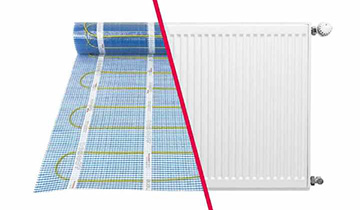
When it comes to heating your home, there are a wide variety of options to choose from. Radiators are one of the most common ways to do it and the concept has been around for decades. In fact, it wasn’t until the Victorian era when radiators really rose in popularity.
Yet with all the history radiators have, the way homes are heated continues to change and the advancement made in technology has enabled more modern heating systems to be equally viable as the traditional radiator system. So, for this heating article we will be answering one of the most common questions asked when thinking about changing your home heating system…underfloor heating vs radiators – what’s better?
‘Underfloor heating can’t be used as a primary heat source.’ Wrong! This is also one of the reasons why many homeowners continue to simply update their traditional radiators and keep them as a primary heat source.
Let’s define the difference between a primary and secondary heat source. A primary heat source is a heating system that takes care of the majority of the heating demand in your home. A secondary heat source is a supplementary source of heat such as the addition of electric underfloor heating in your bathroom for the purpose of simply heating the tiled floor.
When it comes to using underfloor heating as the primary heat source, a wet underfloor heating system is ideal for large spaces and for projects such as new builds where the pipework can be embedded in the early stages of the floor construction. Heat up times are around two hours and the heat is stored within the layer of screed which helps to slowly distribute a comfortable and even level of heat over time.
Electric underfloor heating can also be used as a primary heat source for large spaces but one thing that is holding it back is the current cost per kWh of electricity is much higher than the cost of gas. If you were to install electric underfloor heating in the same sized room as you installed a wet system, the room heated with the electric underfloor heating would cost 3x – 4x as much to run.
When considering underfloor heating as a primary heat source, it’s important to commission a heat loss calculation. This will inform you if the maximum heating output of the underfloor heating system is more than the heat loss of the space.
By transforming your heating system with underfloor heating, your health may also benefit too. You can reduce the risk of inhaling dust particles in the air and even ease aches and pains of joints. If you want to find out more about the health benefits, check out ‘Can underfloor heating boost your health?’ blog post.
Underfloor heating and radiators generate and distribute heat differently.
Underfloor heating is more efficient than radiators because both systems run at much lower temperatures. You can run electric underfloor heating at 270C degrees for soft floor finishes such as wood, carpet or vinyl. But, if you are installing a tile or stone floor, you can increase the temperature further to around 290C degrees. For wet underfloor heating, the water that runs through the pipework is usually around 450C degrees.
Both types of underfloor heating (wet and electric) generate radiant heat and in effect turn the floor into a large radiator (Read our wet vs electric blog). The heat gently rises upwards and creates a comfortable level of warmth which is evenly distributed throughout the room. This means that there are no cold spots and there’s no need to huddle around a radiator to keep warm. Radiant heat also maintains the natural humidity of the room and reduces the risk of overheating of your body.
Ironically, radiators do not warm rooms by creating radiant heat. Radiators create heat through convection by warming the cool air at the bottom of the radiator, which warms as it passes over the fins, rises to the ceiling and cools again. Radiators need water at a temperature of between 650C degrees and 850C degrees to be pumped through which takes more energy and therefore less energy efficient. Additionally, there is a higher risk of overheating when using a traditional radiator system as some parts of the room will be much hotter than others which can cause the room to feel ‘stuffy’.
Advantages
More comfortable heat: The radiant heat advantage that underfloor heating provides can’t be matched. The heat is distributed evenly throughout the living space which helps to prevent any cold spots
Greater design freedom: Underfloor heating frees up wall space, which allows you to design freely, place furniture where you want it and never again have to paint behind radiators. Phew!
Superior control: With underfloor heating you can create heating zones. Each room is controlled individually with its own thermostat so you only use energy to heat the room you want, when you want. This reduces the amount of energy used throughout the year which is better for the environment and your pocket!
Unrivalled efficiency: Underfloor heating works at much lower temperatures compared to radiators because it effectively turns a large surface area (the floor) into one big radiator. The result is a system that uses between 15% – 40% less energy than a traditional radiator.
Better for the environment: Underfloor heating uses less energy to create ideal comfort. Both wet and electric underfloor heating can be easily linked to renewable energy sources such as heat pumps for wet and photovoltaic systems (solar panels) for electric which provides even more energy saving potential. Additionally, the latest iteration of SAP 10 (What is SAP 10?), favours wet underfloor heating (plus heat pumps) and electric underfloor heating over traditional central heating systems because they have a much lower carbon emission factor which makes it easier to comply with Building regulations.
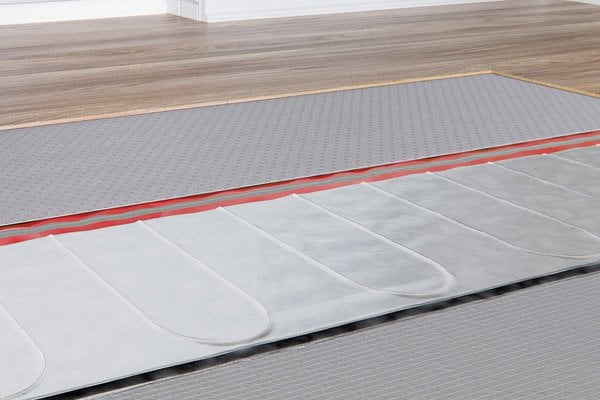
Disadvantages
Longer heat up times (wet): A wet underfloor heating system takes longer to heat a room to the desired temperature (1 – 2 hours) compared with electric underfloor heating (45 – 60mins) and traditional radiators (20 – 30mins).
Restriction on furniture: Underfloor heating can restrict the type of furniture you are able to put on the floor. For example, putting down a rug or bean bag could cause the system to overheat and damage the floor finish.
Advantages
Faster to heat up: Radiators heat up a room in around 20 – 30mins which is pretty fast!
Great range of designs: Gone are the days where all radiators look the same. There’s a wide selection of styles and colours to choose. From designer radiators to coloured radiators, you can select what style matches your vision for the room. You can explore different ranges by visiting sites like Best Heating and Stelrad.
Cheaper than electric: Central heating radiators are currently cheaper to run based on existing energy tariffs where gas is currently cheaper than electric. However, with the drive to reduce carbon emissions, the use of gas will inevitably get penalised and the use of alternative fuel sources will continue to rise.
Disadvantages
Less efficient: Traditional radiators operate at a higher temperature which uses much more energy. This results in producing a larger carbon footprint compared with underfloor heating.
Uneven distribution of heat: Radiators use convection to warm a room and that means heat isn’t distributed evenly. That’s why it is always warmer to sit near a radiator rather than over the other side of the room.
More dust circulation: Heating using convection also causes more dust particles to be transported in the air. If you are an asthma sufferer, then you may find your asthma symptoms get worse. You’ll also find more dust build up on the back and top of your radiator. As the air rises then cools, it takes the dust particles with it. This dust filled air is then reheated and drawn up through the radiator and starts collecting behind the radiator.
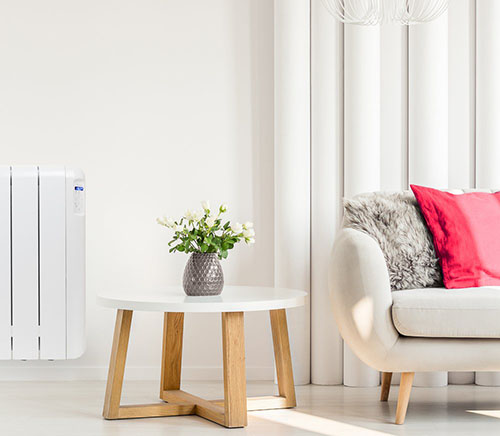
When it comes to underfloor heating there are lots of variables to consider. For example, the type of project, what system is being installed and what material the floor will be finished with. However, we’ve ticked all these off in one of our previous blogs; ‘electric underfloor heating vs wet underfloor heating – what is better?’. Take a look because there are some positively surprising points that may help you with your decision.
For traditional radiators, the biggest expense when fitting a new central heating system is the gas boiler (which will be banned in new builds by 2025). A good quality boiler like one by Worcester Bosch can cost in the region of £1,500 – £1,750 (excluding labour) depending on specification you decide to choose. For your typical central heating radiator, £750 – £850 (including labour) for 6/7 radiators is not unrealistic.
ELECTRIC UNDERFLOOR HEATING COST CALCULATOR
Honestly, it will come down to personal preference, budget and the type of project. However, what is on the rise is the installation of heating systems that have significantly less impact on the environment which could pave the way for electric heating to dominate. Time will tell.
If you have any questions regarding points raised in this post or about heating your home in general, we’d love to speak to you. Contact one of the team.
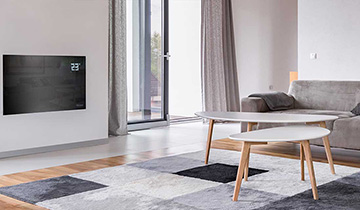
5 min read
Popularity in electric heating is rising and it won’t be slowing down any time soon. Let’s take the electric radiator market. By 2025 the European...
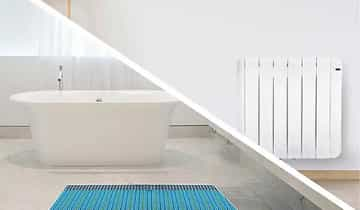
6 min read
Without a doubt 2020 was a year of many ups and downs and now with the cooler weather upon us, it is important that we focus on the heating in our...
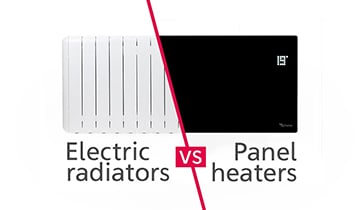
5 min read
In this blog we run through the difference between electric radiators and panel heaters. If you are thinking about giving your home heating a bit of...